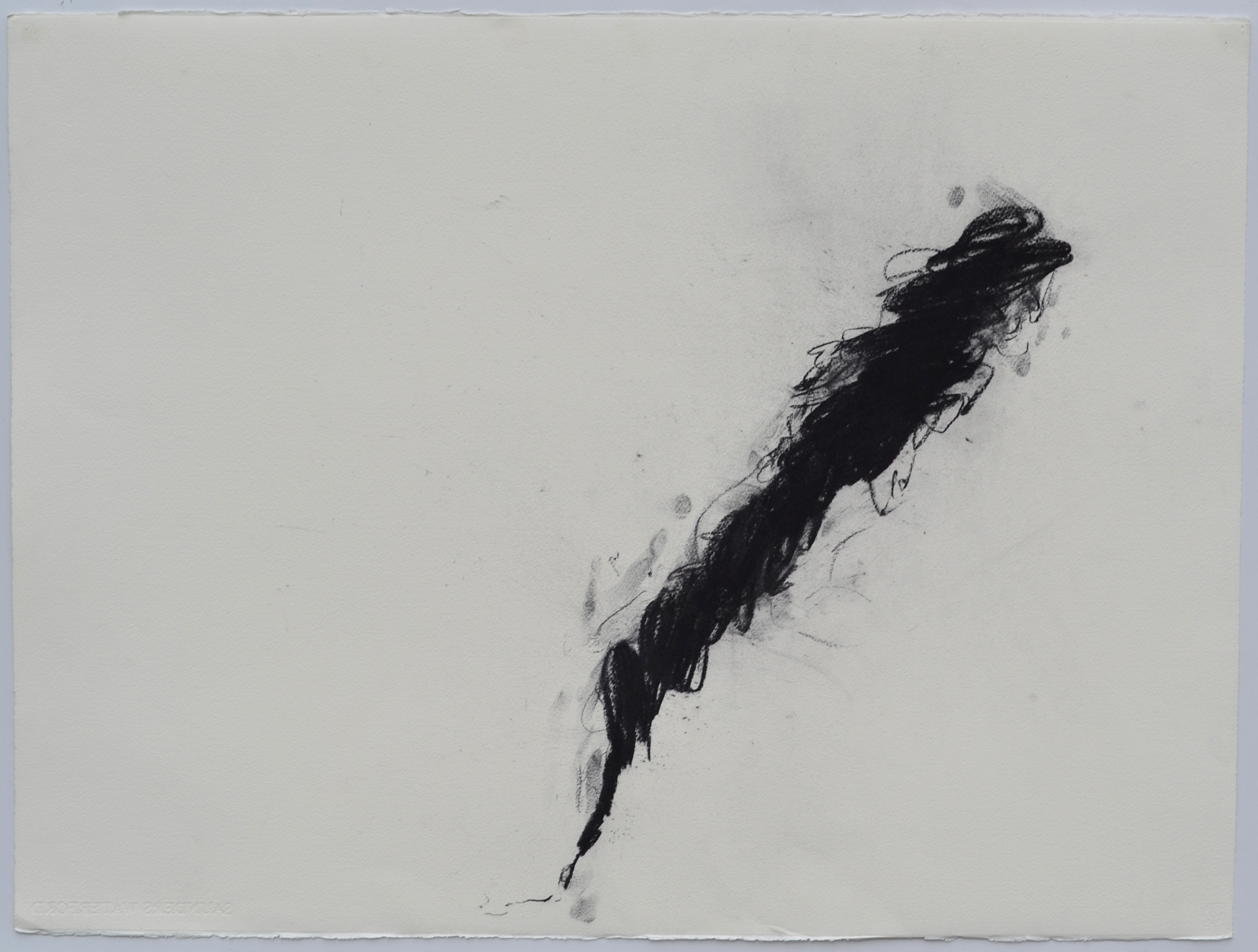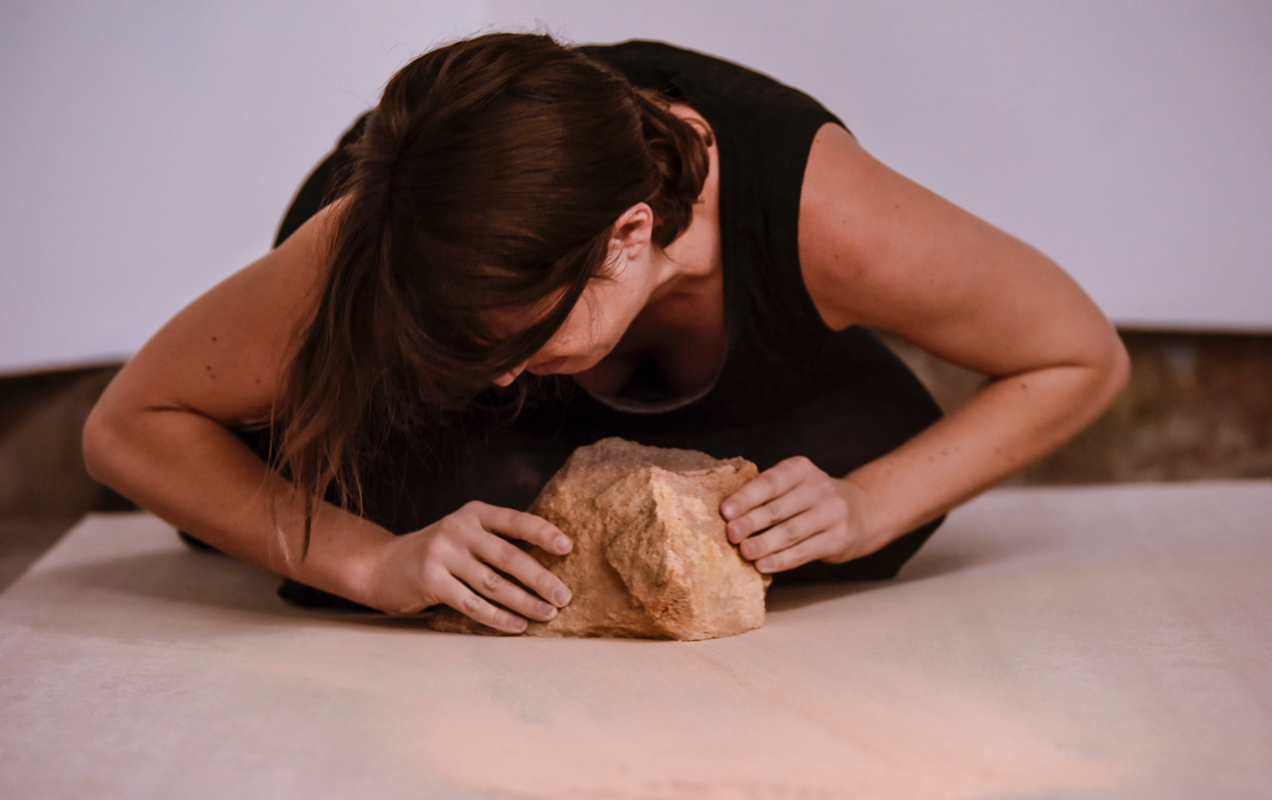
Brooke Leigh, Bodily Trace, 2019, residual chalk and sweat on concrete from one hour performance, archival pigment print on cotton rag, 103 x 39 cm
BROOKE LEIGH
BROOKE LEIGH is a visual artist from Sydney. For the past eight years, Leigh’s practice has focused on the performative aspect of drawing as a cathartic experience. In this sense, catharsis is the release of internalised emotions, which then becomes the catalyst for understanding and acceptance. In 2018, Leigh was awarded with a Master of Fine Arts from Sydney College of the Arts (The University of Sydney) for her thesis and project, ‘Drawn-Out: trace and catharsis’. Supported by the Royston George Booker Scholarship for overseas research, Leigh was a visiting scholar at LUCA School of Arts in Ghent Belgium between 2015-16. Her work has been exhibited at the Museum of Contemporary Art Australia (2017), Canberra Contemporary Art Space (2018), UNSW Art & Design (2019), The Crypt Gallery St Pancras, London UK (2019), Croxhapox Ghent Belgium (2015), Tate Modern and London’s National Theatre, UK (2008).
Bodily Trace
Bodily Trace is a drawing of physical labour and persistence––the act of kneeling on the ground with my arms outstretched, and pushing a 3kg lump of chalk back and forth until my body reaches the point of exhaustion. This work encapsulates the residual drawing of my body by means of photographic documentation. This work discovers the reassertion of control through externalisation and the possibility that the mark and performance allow one to express, recognise and thereby come to terms with bodily and emotional suffering.

Brooke Leigh, Ignite (Automatic Landscapes series), 2012, charcoal on paper, 56 x 76cm
Ignite

Brooke Leigh, Drawn-Out, 2018, 40 minute durational performance. Photo credit: Dominique Berns-Blackwell
Drawn Out
Drawn-Out investigates the performative act of drawing to encounter intense states of the body as a cathartic experience. In this sense, the drawing process functions as a way to release severely internalised distress. This performance responds to the cyclical and self-destructive aspect of anxiety. Repetition and duration become devices in order to work my body into a state of exhaustion and near-destruction. This work significantly extends on my explorations of audition to amplify the sensory experience of bodily exhaustion, and the possibility for the sound of mark making––by means of audio recording––to exist as a trace of drawing.